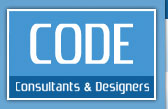 |
|
||||||||
|
|||||||||

|
|
1. CODE
design group is ready to undertake bridge design tasks for small, medium and
large span bridge crossings in urban and rural settings. Design is in general
developed to one of the following international codes in conjunction with the
application of the regulations of local authorities vis-à-vis axle loads and
seismic regulations:
1.
American
code AASHTO
2.
British
standard BS5400
3.
French
codes BAEL, BPEL and Fascicule 61
Deck material: Reinforced concrete,
prestressed concrete or steel
Traffic type: Pedestrian, vehicular or
railway
Structural system: Simply supported or continuous
Deck system: Slabs (solid or voided), slab-on-girders or box girders (single or multi-cells) Construction mode: Cast-in-situ, precast, balanced cantilever, by launching or cable stayed.
3.
The
design of a bridge structure is normally carried out in three typical phases,
namely:
3.1 Concept Design
It includes the following tasks:
1. Data collection on local regulations, axle loads, environmental data, materials availability, local construction techniques and the like.
2.
Selection
of design standards and codes.
3.
Development
of various bridge alternatives in form of drawings and perspectives.
4. Comparison of different alternatives technically, aesthetically and economically and recommendation of most competitive concepts.
3.2
Preliminary Design
After
Client’s approval of bridge concept, the preliminary design phase is prepared
to produce the following documents:
1.
General arrangement drawings of
abutments, piers and deck.
2.
Foundations general arrangement
drawings based on results of subsoil investigation
3.
Construction method and sequence.
4.
Pre-stressing scheme.
5. Deck accessories details namely, bridge bearings, movement joints, parapets, drainage gullies, waterproofing membranes
and wearing courses.
6.
Preliminary Quantities.
7.
Technical Specifications.
8. Preliminary calculation notes.
3.3
Final Design
Upon approval of the preliminary design, the final design is
developed taking into account any eventual comments.
The
issued documents include:
1. Final general arrangement drawings
including detailed setting out and dimensions.
2. Final foundations details including
piling, if any.
3. Prestressing final details including
cable profiles, anchorage layout and forces.
4. Detailed
reinforcement drawings for substructure and superstructure elements.
5. Bar
bending schedules of passive reinforcement.
6. Bearing
and movement joint details.
7. Deck
drainage details.
8. Waterproofing
and bituminous pavement details.
9. Parapets
and metallic rails.
10.
Final
bills of quantities.
11.
Final
technical specifications.
12.
Final
calculation notes.
|
||
|
|
|